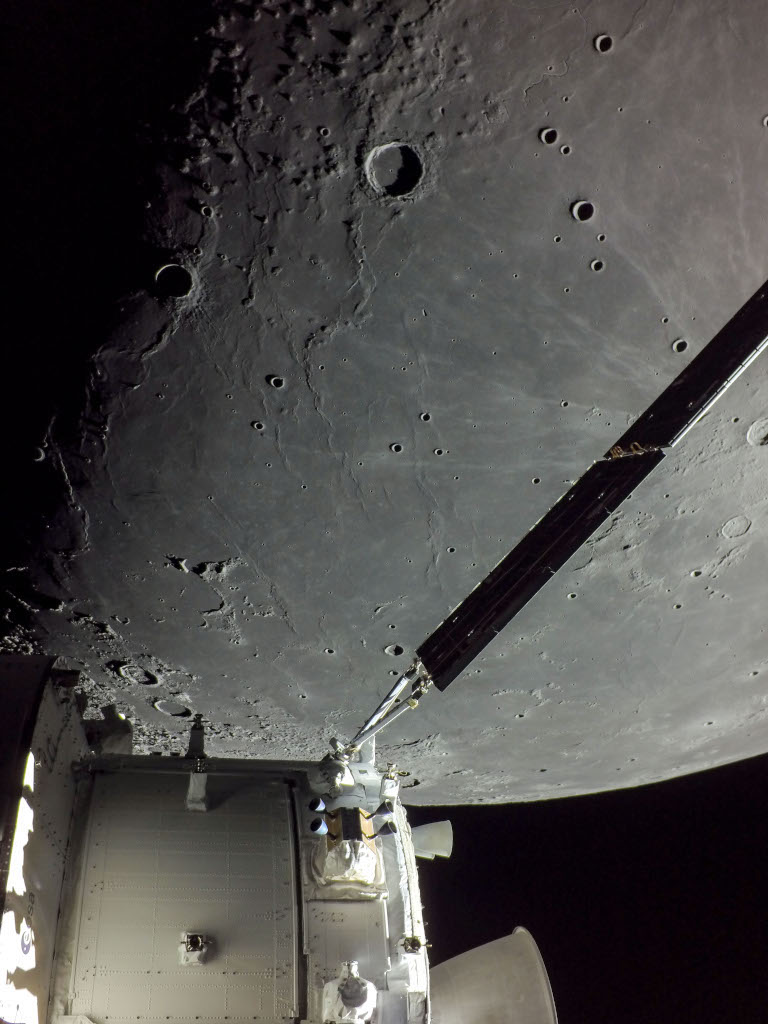2023年12月7日
Orion and the Ocean of Storms
Image Credit: NASA, Artemis 1
Explanation: On December 5, 2022, a camera on board the uncrewed Orion spacecraft captured this view as Orion approached its return powered flyby of the Moon. Beyond one of Orion’s extended solar arrays lies dark, smooth, terrain along the western edge of the Oceanus Procellarum. Prominent on the lunar nearside Oceanus Procellarum, the Ocean of Storms, is the largest of the Moon’s lava-flooded maria. The lunar terminator, shadow line between lunar night and day, runs along the left of this frame. The 41 kilometer diameter crater Marius is top center, with ray crater Kepler peeking in at the edge, just right of the solar array wing. Kepler’s bright rays extend to the north and west, reaching the dark-floored Marius. On December 11, 2022 the Orion spacecraft reached its home world. The historic Artemis 1 mission ended with Orion’s successful splashdown in planet Earth’s water-flooded Pacific Ocean.
Tomorrow’s picture: pixels in space
说明: 2022年12月5日,当猎户座进行返程动力飞越月球时,猎户座飞船的相机拍下了这片景观。在猎户座的一组太阳能板阵列的后方,可见到风暴洋西缘的黝黑平滑原野。座落在月亮正面、非常醒目的风暴洋,为月表被熔岩覆盖的月海中之最大者。而分隔月球黑夜和白天的明暗交界线,则划过这片视野的左侧。直径41公里的马吕斯坑位于影像的中上方,而辐射状的开普勒坑隐约出现在太阳态板阵列的右侧。开普勒坑的明亮辐线向北和向西伸展,直达黝黑的马吕斯坑。2022年12月11日,猎户座飞船回到了它的家乡。历史性的阿尔忒弥斯1号任务,以猎户座在地球被水覆盖的太平洋面成功溅落而告终。
明日的图片: pixels in space



